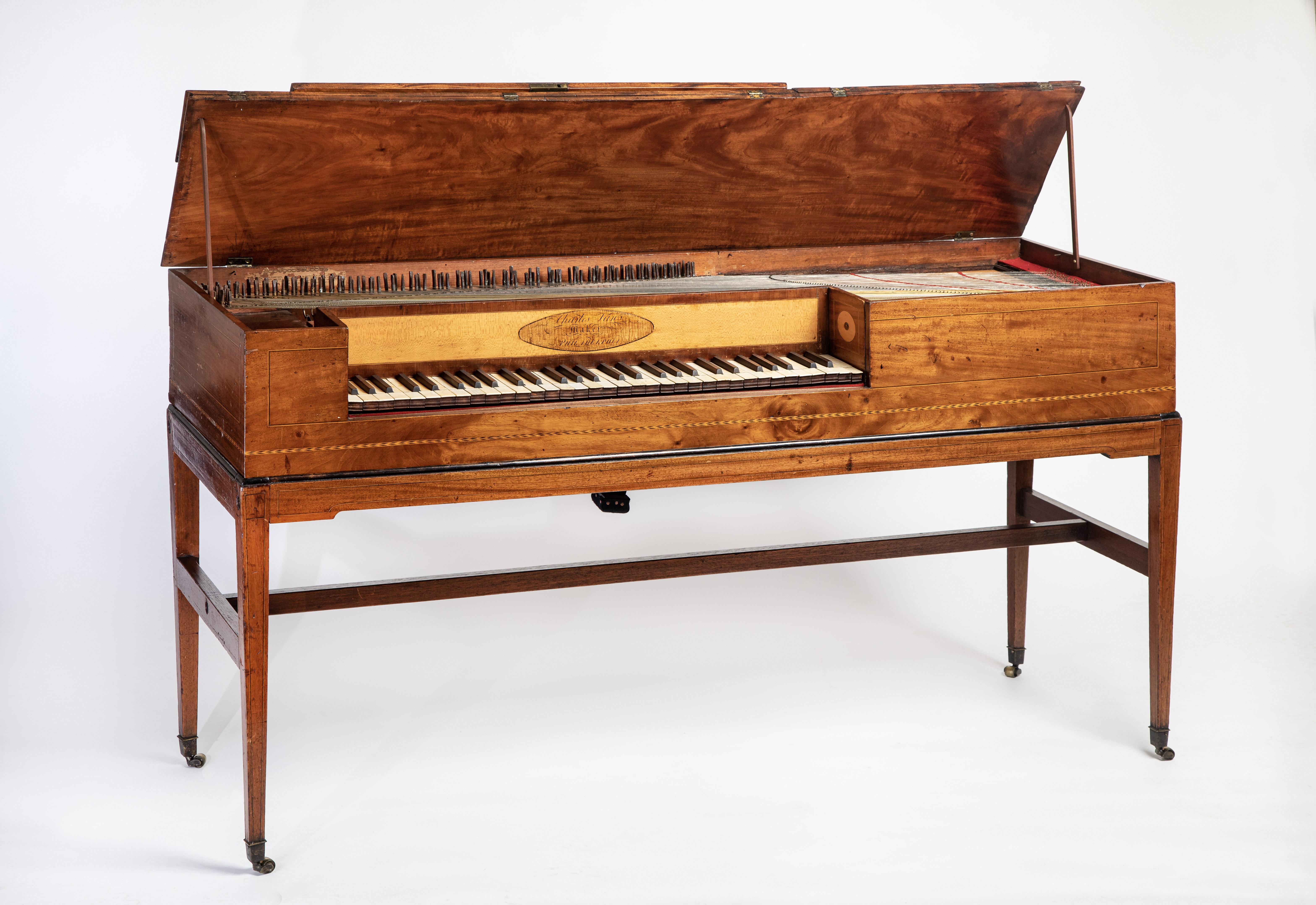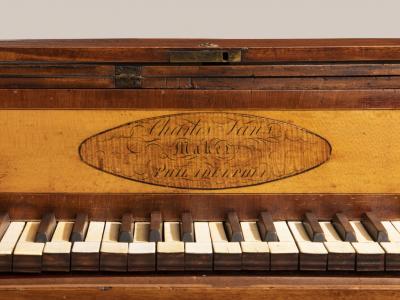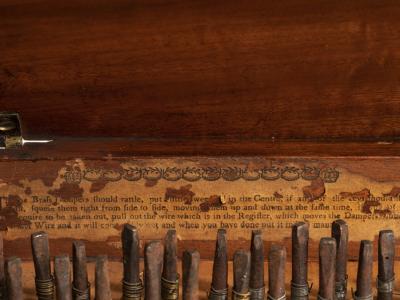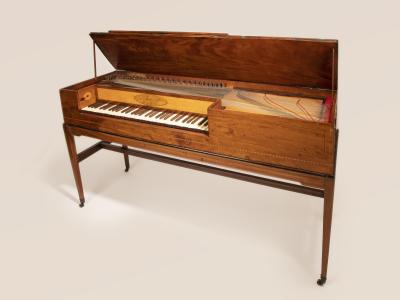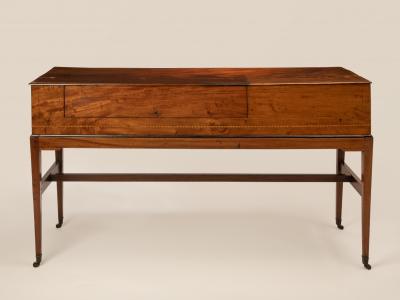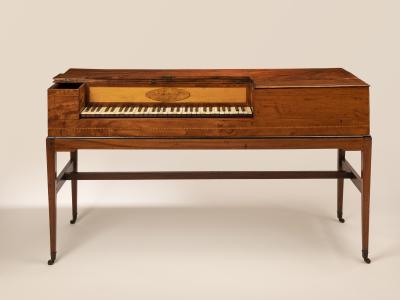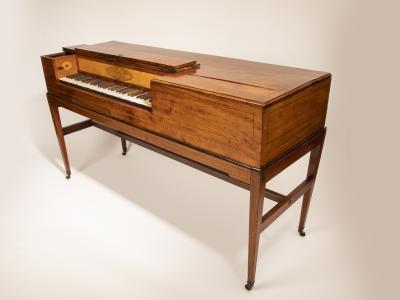Pianoforte
Philadelphia, Pennsylvania
1794 (possibly 1791)
Maker
Charles Taws (c. 1743-1836)
Measurements
33 3/4 in x 61 3/4 in x 21 1/4 in
Materials
Mahogany, satinwood, maple, light and dark stringing and banding, ebony, and ivory; unidentified secondary woods and metals.
Credit Line
Historic Odessa Foundation, gift of H. Rodney Sharp
Accession Number
1958.3292
Inscription
Charles Taws / Maker / Philadelphia / 1794” is painted onto the nameboard above the keyboard; printed tuning instructions are pasted at upper left of inside backboard.
Condition Notes
Three plugged screw holes near the top of the right side show where the soundboard has been reinforced. The knee-controlled damper pedal, tucked under the middle of the piano box, is a replacement
Provenance
Ex coll. H. Rodney Sharp
Comments
Since the 1770s, the pianoforte grew in popularity in American cultural centers to become the instrument of choice for refined social gatherings in the 1790s and later. Its primary advantage over the harpsichord and related keyboard instruments that plucked strings to produce sound was better control over the sound volume: by controlling a damper on the leather-wrapped hammers that struck the tuned wires, players could play soft (piano) or loud (forte). This pianoforte has 36 ivory keys and 25 ebony ones, providing a range of five octaves. Its case is made of fine mahogany and other exotic woods and meticulously crafted. About a dozen pianofortes by Charles Taws are known.
Bibliography
Helen May Talley Taws and Edward Town Taws, Charles Taws, ca. 1743-1836, Musical Instrument Maker: His Career, His Progeny and Some of His Descendants (Philadelphia: by the authors, 1968), 8.
